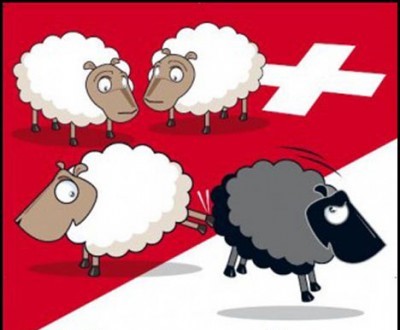Racism isn’t a subject I wanted to get into here (beyond a few jokes at the expense of the Brexiteers and their comic view of foreigners), but a recent, terrible, event in Algeciras has brought the subject up once again in political conversation and, inevitably, social media, where we all tend to say (or write in under 280 letters) – more than we should.
Especially if we sign it with un nick (an alias).
A Moroccan left his home the other evening, armed with a machete, and killed a local priest. There’s a video of his victory strut (available on Twitter) and, encouraged, he went off and wounded a second priest before being arrested.
His photo in the media, taken at the police station, shows somebody who is clearly pleased with himself.
The reaction was perhaps obvious, as we’ve all seen it before.
The local Muslim community showed horror at the tragedy and they acquitted themselves, as they always do, with sympathy, kindness and honour. “This is very sad, and it tarnishes our image. Our holy book says that no one can kill. For us God gives life and no one has the right to take it away. That is what Islam says, Islam is peace. The boy who has done this does not know Islam, he is yet another victim, the culprits are the leaders (jihadists) who brainwash people like him," a 36-year-old Moroccan who has lived in Algeciras for decades told reporters.
Elsewhere, we read that the Muslim community in Algeciras are receiving threats ‘we are being warned that the guns are loaded and ready’.
There are some 875,000 Moroccans living legally in Spain, plus many from other Muslim nations. One family from Casablanca lives next to me in Almería, and I am close to them. On the other side, we have several young Africans who have crossed the Mediterranean in dangerous conditions. One of them lost a brother on such a crossing. They are friendly, too.
Maybe, of course, for them as much as for me, it’s hard being a racist when you’re a foreigner. 
No doubt the Secret Police keep an eye on all of us foreigners, which makes me think – didn’t I used to be a European?
And talking of the police, a chief inspector from Valencia, recently sacked for racist comments, is now patrolling the churches there with (a gang of ruffians) a group of concerned citizens.
But then, others also keep an eye on us, especially if we can’t vote. Take the Vox party and its followers. ‘You open the doors, and in they come’ says Santiago Abascal bitterly.
The PP’s Núñez Feijóo meanwhile was unable to express himself adequately after claiming that ‘We Christians for centuries have never killed for our religion’.
We read that ‘…Although the atrocity met with swift condemnation and revulsion from Christian, Muslim and Jewish groups, the reactions of the leaders of the conservative People’s party (PP) and the far-right Vox party have been denounced by members of the country’s Socialist-led coalition government and by migrant and anti-racism NGOs…’
ECD runs an opinion piece: ‘…You don't have to be a Vox sympathizer to recognize that our first concern should be the anti-Christian hatred reflected in this attack and others of the same type that are taking place in Europe. Before the imaginary victims of possible Islamophobia, we should think of the real victims of a deadly Islamist ideology…’
And that silly fellow in the police station. Smiling.
 The
president participated last week (Tuesday) in the economic forum of
Davos in which he had asked the global elites to help governments to
oblige companies to pay their share of taxes and to deter them from
storing their wealth in tax havens.
The
president participated last week (Tuesday) in the economic forum of
Davos in which he had asked the global elites to help governments to
oblige companies to pay their share of taxes and to deter them from
storing their wealth in tax havens.



